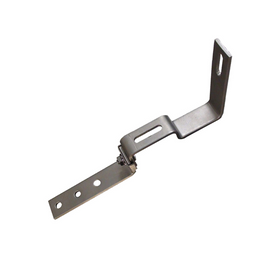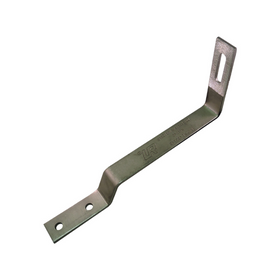- Home

In part due to utility company advertising, homeowners have long believed that natural gas is a cleaner energy option than using electricity to power home appliances. That used to be accurate, Nilles explains. “A decade ago, the majority of our electricity came from coal, and the only appliance options were inefficient energy guzzlers. Now coal use has halved. Clean energy sources like wind and solar are booming. Modern electric appliances are upward of two to four times more efficient. A recent RMI report concludes that electric homes are now cleaner and will only continue to get cleaner as our electric grid shifts from coal and gas to wind and solar.”
Gas, however, is still a non-renewable fossil fuel that emits carbon dioxide (CO2), methane (a much more potent greenhouse gas than CO2), and nitrogen oxides (NOx), a precursor to smog. Around 48 percent of homes in the US still rely on propane or natural gas for heat. Nilles learned that “in California, we burn as much gas in power plants as we do in our homes—that’s 40 million people burning gas, a fossil fuel,” he says. “That knocked me over.”
Moreover, he realized that burning natural gas inside his home was unhealthy for his family. “Natural gas plants in California have pollution controls; the gas-powered furnaces, stoves, water heaters, and clothes dryers on our homes do not,” he says. Studies conducted by Lawrence Berkeley National Laboratory have found that in 2014, during any given week during the winter in Northern California, when homeowners close the windows, 12 million residents with gas-powered stoves are breathing levels of nitrogen dioxide (NO2) that the EPA has recognized as illegal outside.
So, Nilles and his wife Bonnie got busy. They replaced their aging gas stove and oven, water heater, and clothes dryer with electric versions. They installed solar panels to power the house and replaced their gas-powered car with a pre-owned Tesla. They now live with their two young children in an all-electric, emission-free house.
“It’s a solvable problem,” Nilles says of converting home appliances from gas to electric. “It’s time to connect the dots between pieces of the carbon footprint we leave and figure out what parts we can solve. Converting to electric is one of the quickest and easiest things we can do.” Here’s how they did it.
Contractors and Permits
Nilles started by calling several contractors about converting to electricity. “They asked why,” he recalls. “I explained. They thought I should keep gas because that was all they knew. They weren’t listening, so they weren’t the right people for the job.”
As Build With Rise’s editor, Melissa Rappaport Schifman, had noted about her own home, “When we built our house ten years ago, it was all about efficiency… natural gas was [a] more efficient and less expensive choice for heating. In addition, natural gas is a cleaner-burning fuel than coal. Because the electrical grid was primarily fueled by coal, natural gas-powered equipment was the cleaner choice for our air.”
The electrical grid, however, has been getting cleaner in the last decade, Nilles says. Even though “utilities and efficiency experts keep pushing gas, electric is quickly becoming a cleaner, safer option.” Eventually, Nilles “found a contractor who is an evangelist for the conversion from gas to electric. He’d done a bunch of houses, including his own.” Nilles set out to get the necessary permits from the City of Oakland. “They were super nice but said no, you couldn’t have a permit.”
A supervisor went over the California legal code with Nilles. “It said homeowners weren’t allowed to install resistance electric, the old-fashioned kind of electrical current used in appliances akin to incandescent lightbulbs. But I was going to use heat pumps,” a device that moves thermal energy in the opposite direction of spontaneous heat transfer, by absorbing heat from a cold space and releasing it to a warmer one. Nilles got his permit—three of them, in fact—for mechanical, plumbing, and electrical work. Price tag: $925.
Next, Nilles hired an electrician to upgrade the fuse box from 110A to 200A and run wires for the clothes dryer, stove, furnace, hot-water heater, and Tesla. Price tag: $5,000.
Selecting Electrical Appliances
Because gas appliances had come with the house when Nilles and his wife purchased it six years ago, they were about ten years old. One option for them was to convert to electric piece by piece, replacing each appliance over the next couple of years on an as-needed basis. Instead, they decided to do it all at once. Here’s how they did it.
The stove and oven were first. “It’s the appliance we interact with the most, several times a day, every day,” Nilles says. Bonnie hesitated. She did most of the cooking and loved how fast and responsive the gas stove was. Then they saw that Nate the House Whisperer, on Twitter, recommend an induction hot plate.
“We bought one on Amazon for $70,” Nilles says. “The hot plate gave us great insight as to how fast, sensitive, and safe induction is. It’s the Tesla of cooking.” They splurged on a GE Café with knobs. “It’s beautiful, does just what we want, and is a real workhorse,” Nilles says.

Nilles projects a six-to-nine-year payback for the solar installation. “For homeowners, the payback depends, in part, on how you attribute the cost of new electrical appliances,” he explains. “If you assume you’ll have to replace them anyway within the next couple of years, the cost only seems slightly expensive. But we’ve also factored in the fact that we now have air conditioning. As climate change continues, with more fires and smoke in California and hotter summers, air conditioning is an asset. And it’s solar-powered, so we’re not contributing to climate change.”
Make the Change
At Rise, we wholeheartedly believe that switching from gas to electric-powered appliances is one of the most impactful things we can do to our own homes to fight climate change. Thanks to leaders like Bruce Nilles, we see how it can be done—and that significant health benefits come with it!
Camille LeFevre
Camille LeFevre is an architecture and design writer based in the Twin Cities.












